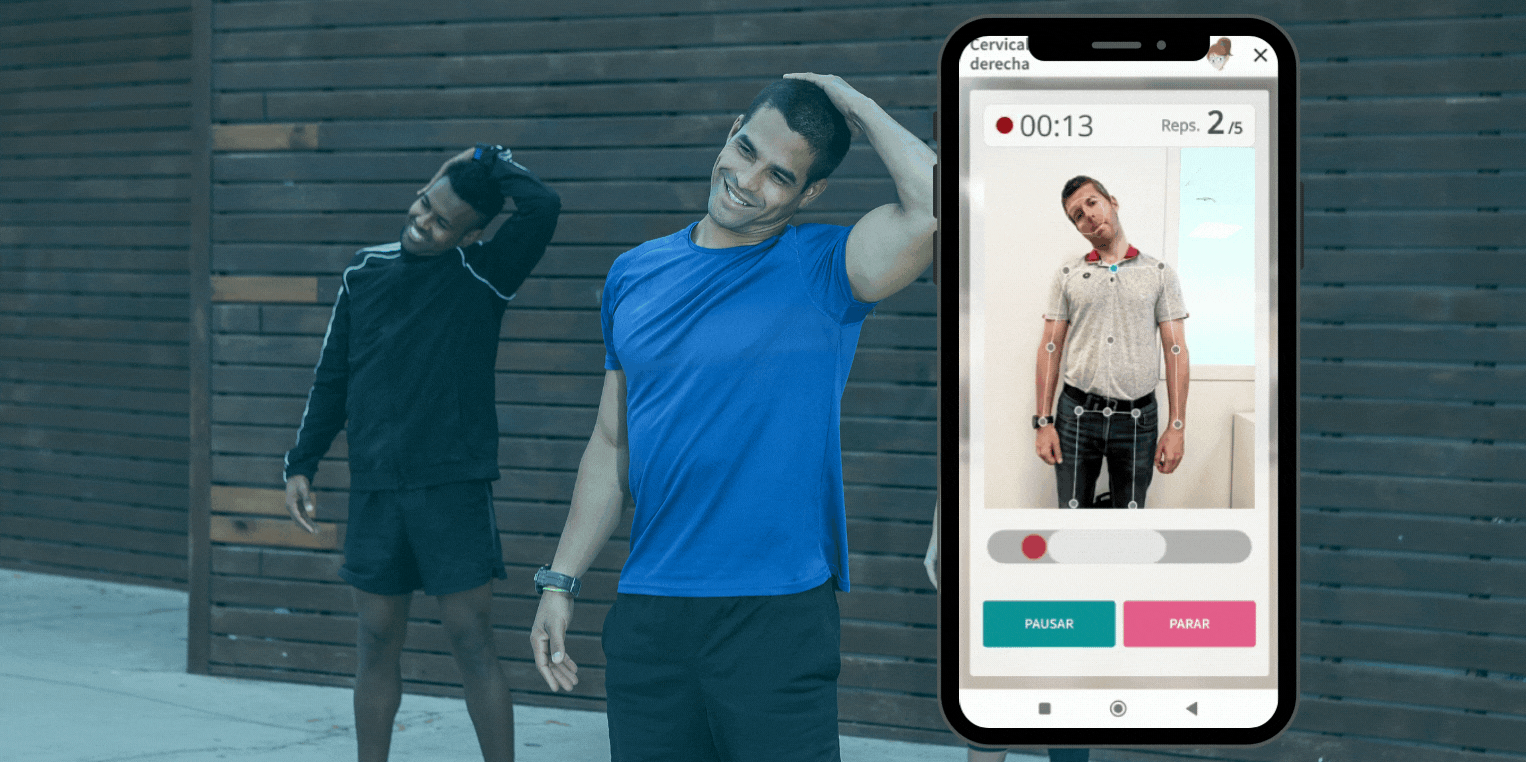Telerehabilitation is part of the telemedicine subfield spectrum providing a remote rehabilitation service, allowing and monitoring the process with technology. It is a path to easy access to physical therapy and to improve the continued attention of people with disabilities, geographically remote and vulnerable groups, saving time and money.
In neck pain, when rehabilitation is required, the technology can effectively address different conditions, populations, and environments.
¿What is neck pain? ¿What produces it?
Mainly, cervicalgia is neck pain. The neck bones shape the cervical column, the area that extends from the first spinal vertebra to the seventh. The first bone of the columns it's found approximately at our ears level and the seventh at the base of the neck.
To maintain the head at a normal position, the muscles at the nape have to work correctly, because the head and the neck aren't at a central point. The neck holds the back of the head. A common cause of neck pain it's the mix of the muscle tension required to maintain the head in the correct position, together with the joints damages between the cervical vertebrae.
¿What generates this pain?
Adrián Ventero Gómez, a physiotherapy supervisor in the Hospital de Denia de Marina Salud, clearly identifies three:
- Visual positions and targeting the same point: for example while working with the computer.
- Profession or activity with repetitive movements: for example an electrician or a painter.
- Stress situation, when emotional pain is somatized.
Benefits of physiotherapy for neck pain
Adrián Ventero explained to us that there exists an extensive spectrum of exercises used by physiotherapists to recover neck mobility, empowering contrary muscle to the located one.
"One of the things we always work with, it's empowering shoulder external rotation: opening, resistance exercises with elastic bands, scapular stabilization...".
For those who don't know, the shoulder girdle extends from the base of the neck to the upper edge of the chest and connects with the torso. The scapula and the clavicle form it and it's divided into three zones: anterior or axillary, middle or deltoid, and posterior or scapula.
"Physiotherapy therapies always strengthen the shoulder girdle and the shoulders. To do this we do external rotation exercises."
In general terms, it depends on the injury evolution and the perseverance of the patients carrying out the prescribed exercises.
"Over a month and a half or two months should be enough to notice a considerable improvement. From there, maintenance and prevention work out."
.png?width=700&name=Dise%C3%B1o%20sin%20t%C3%ADtulo%20(16).png)
1) Advantages and disadvantages of face-to-face physiotherapy
Face-to-face physiotherapy treatment is effective for people with cervicalgia. It's based on the theory that muscle dysfunction and weakness are the root causes of neck pain. The main goal is to restore and improve neck function.
Advantages
- A musculoskeletal clinical examination that requires specific tests can be performed for a more thorough and complete evaluation of the patient.
- The physiotherapist can provide a face-to-face treatment that allows him to manually check the patient's recovery status.
- Complementary treatments can be applied through therapeutic devices (shock waves, dry needling, electrostimulation, ultrasound, laser, etc.).
Disadvantages
- The use of face masks still required in many countries can be uncomfortable during exercise.
- There is no traceability of the treatment as it is not possible to monitor the patient with objective data.
- The cost of time and transport invested by the patient is still high (for example, in towns far from cities)
2) Advantages and disadvantages of telerehabilitation physiotherapy
In the last decade, the technology for remote evaluation, as well as for home-based rehabilitation such as telerehabilitation has grown enormously. Typical services included in an online physical therapy visit include assessment, treatment, monitoring, and follow-up. The technologies used, include inertial sensors, viewing vision, camera detection, and virtual reality, among others.
In this case, Ana Campos, physiotherapist in eVital tells us:
“ A good evaluation is the angular key that evokes correct diagnosis and correct treatment. This evaluation it's obtained with the same precision as a face-to-face session in a remote rehabilitation.”
Also, according to the latest studies, any physiotherapy treatment can benefit from the effects of therapeutic exercise, which is why these benefits are exploited in online therapy over other therapies, such as manual therapy, which provides more benefits in the short term than in the long term.

Advantages
- No physical barriers to accessing rehabilitation treatments and affordable prices.
- Avoid unnecessary visits to the consultation and displacement by the professional or patient.
- Telerehabilitation services reduce the costs of hospital expenses for public health, increasing its operational capacity.
- It democratizes access to therapy for people who live in rural, remote areas or who have special physical conditions.
- Empowers the patient by involving him in his recovery process.
Disadvantages
- It is not applicable to injuries that require manual treatment exclusively (such as performing a massage, for example).
- Although insurers have increasingly covered the cost of telerehabilitation services, as is the case with DKV, these services may not yet be covered by all insurers.
Can we do something to prevent neck pain?
.png?width=676&name=Dise%C3%B1o%20sin%20t%C3%ADtulo%20(19).png)
For Adrián Ventero Gómez, walking, riding a bike, doing aerobics exercises in the water, and maintaining a healthy lifestyle, are the best recipes that can be prescribed to prevent any illness nowadays.
"The solution it´s not to repose, if not the contrary"
He confirms that "searching the patient motivation and adapting the exercises to the patient and not doing the opposite ", is the way to reach a successful intervention.
-1.png?width=700&height=350&name=Dise%C3%B1o%20sin%20t%C3%ADtulo%20(6)-1.png)
.png?width=1092&height=497&name=RehubbyDycare_cobalto%20(4).png)
